I’ll cut to the chase: if you’re hunting for dinnerware that’s equal parts stylish, durable, and versatile, Pottery Barn’s Cambria Dinnerware is your answer. It’s the kind of set that makes every meal—whether it’s a Tuesday night taco fest or a fancy holiday spread—feel elevated without trying too hard.
I’ve been using this set for over a year now, and it’s become the unsung hero of my kitchen. Trust me, you’ll want these plates, bowls, and mugs in your life.
Here’s my story, plus everything you need to know to decide if Cambria is your vibe.
My Journey With Cambria: A Love Story In Stoneware
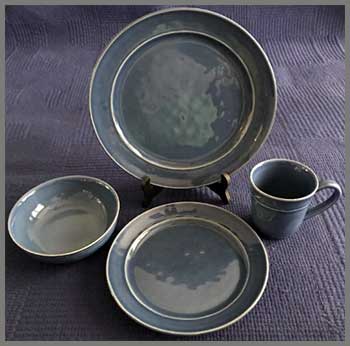
When I first moved into my new apartment, my dinnerware was a mismatched collection of thrift store finds and hand-me-downs.
It was charming in a quirky way, but I craved something cohesive, something that screamed “I’ve got my life together” without breaking the bank.
Enter Pottery Barn’s Cambria Dinnerware.
I stumbled across it while browsing their site, drawn in by the sleek, handcrafted look and the promise of durability.
I went for the 16-piece set in Stone—a neutral, warm gray that felt modern yet timeless.
The first time I unboxed it, I was smitten. Each piece felt substantial in my hands, with a hand-applied patina that gave it a slightly artisanal vibe. The dinner plates were the perfect size—not too big to overwhelm my small dining table, but generous enough for a hearty portion of spaghetti carbonara.
The salad plates doubled as dessert plates, and the cereal bowls were just right for my morning oatmeal or a late-night ice cream binge. The mugs? Oh, they’re my coffee’s best friend, with a comfy handle and a weight that feels just right.
I’ve used Cambria for everything from casual weeknight dinners to hosting friends for a homemade lasagna night. It’s been through countless dishwasher cycles, a few clumsy drops, and even a particularly chaotic taco party where salsa ended up everywhere.
Spoiler alert: it’s still going strong.
The Stone color hides minor stains better than I expected, and the glazed finish gives it a polished look that makes even my takeout pizza feel fancy. My only gripe early on was the price—it’s not cheap—but after a year of daily use, I can say it’s worth every penny. This set isn’t just dinnerware; it’s a lifestyle upgrade.
The Pros of Pottery Barn Cambria Dinnerware
- Timeless Design That Fits Any Vibe
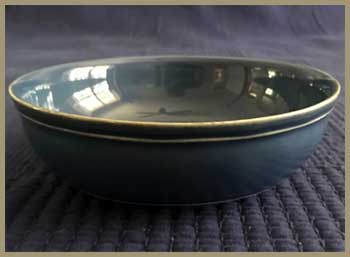
Let’s talk aesthetics because Cambria nails it.
The handcrafted stoneware has a subtle patina that gives each piece a unique, almost handmade feel.
Whether you go for Stone, Persimmon, or Red, the colors are bold yet versatile.
I chose Stone because it pairs with everything—my wooden table, colorful napkins, even my mismatched glassware.
It’s like the little black dress of dinnerware: dress it up for a dinner party or keep it casual for a Netflix-and-chill meal. You can mix and match colors for a fun, eclectic look or stick to one for a cohesive vibe.
- Durability That Handles Real Life
I’m not exactly graceful in the kitchen, so durability was a must. Cambria is handcrafted from stoneware, which feels sturdier than porcelain but not as heavy as some ceramic sets I’ve tried. I’ve dropped a salad plate on my tile floor (yep, heart-stopping moment), and it didn’t even chip.
The glaze is tough, resisting cracks and crazing (those tiny surface cracks you sometimes see on cheaper sets). It’s been through over a year of daily use—think forks scraping, knives cutting, and kids (my niece and nephew) banging around—and it still looks nearly new.
- Dishwasher and Microwave Safe (Hallelujah!)
You know what’s a dealbreaker? Dinnerware that can’t handle the dishwasher or microwave. Cambria is both, and it’s a game-changer. I toss everything in the dishwasher after dinner, and it comes out sparkling. No hand-washing nonsense here.
The microwave-safe feature is a lifesaver for reheating leftovers—my plates don’t get scorching hot like some older sets I’ve owned. Just a heads-up: the mugs can get warm if you nuke your coffee for too long, but nothing unbearable. This practicality makes Cambria perfect for busy folks like me who want quality without extra hassle.
- Perfectly Sized for Everyday Use
The Cambria set is thoughtfully designed for real-world meals. The dinner plates (about 11 inches) are roomy enough for a full meal but not so huge they hog cabinet space.
The salad plates (8.5 inches) are ideal for appetizers or smaller portions, and the cereal bowls hold just the right amount for soup or snacks. The mugs (12 ounces) are my go-to for coffee, tea, or even a quick ramen fix.
Everything stacks neatly, which is a blessing in my tiny kitchen. You won’t be playing Tetris trying to store these.
- Open Stock Flexibility
One of my favorite things about Cambria is that Pottery Barn offers it as open stock. Broke a plate? No need to buy a whole new set—just grab a replacement. Want to add a serving platter for Thanksgiving? They’ve got you covered.
This flexibility means you can build your collection over time, which is great if you’re on a budget or just want to start small. I’ve already added a couple of serving bowls, and they blend seamlessly with my original set.
The Not-So-Good Parts of Cambria Dinnerware
- Pricey Upfront Cost
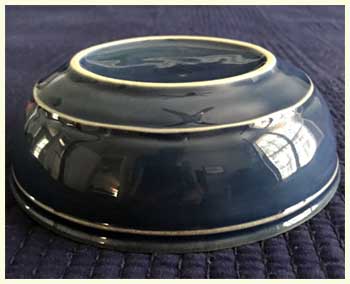
Let’s be real: Cambria isn’t cheap. A 16-piece set (4 dinner plates, 4 salad plates, 4 bowls, 4 mugs) can set you back around $200-$250, depending on sales.
For comparison, you could snag a budget set from Amazon for under $60.
I hesitated before pulling the trigger, but I justified it as an investment in quality.
If you’re balling on a budget, this might sting, especially if you need multiple sets for a big household. Keep an eye out for Pottery Barn’s sales—they often knock off 20-30%, which helps.
- Slight Weight Issue for Some
While I love the sturdy feel, Cambria is heavier than lightweight options like Corelle. The dinner plates weigh about 1.5 pounds each, which isn’t crazy, but if you’ve got wrist issues or prefer featherlight dishes, you might find them a bit much.
Stacking a full set for storage can also feel like a mini workout. My mom, who’s in her 60s, found them a tad heavy when helping me set the table, so it’s worth considering if weight is a concern for you.
- Minor Scratch Susceptibility
The glazed finish is generally tough, but it’s not invincible. After months of daily use, I’ve noticed faint scratches on a couple of plates, likely from my stainless steel flatware. They’re not super noticeable (especially in the Stone color), but if you’re a perfectionist, this might bug you.
Using gentler utensils or being mindful when stacking can help. I’ve also heard that lighter colors like White might show scratches more, so darker shades could be a safer bet.
- Limited Color Options
Cambria’s color range—Stone, Persimmon, Red, and a few others—is gorgeous but not extensive. If you’re someone who loves a rainbow of options (like Fiesta’s vibrant lineup), you might feel a bit boxed in.
I adore the Stone, but I wish there were a few more neutral tones, like a soft blue or green, to mix things up. That said, the available colors are versatile enough to suit most aesthetics.
Maintenance Tips To Keep Your Cambria Looking Fab
- Dishwasher Dos and Don’ts
Cambria is dishwasher-safe, which is a godsend, but a little TLC goes a long way. I always load my plates and bowls on the top rack to avoid the intense heat of the bottom rack, which can stress the glaze over time.
Space them out so they don’t clink against each other—trust me, a crowded dishwasher is a recipe for chips. If you notice any stubborn food bits (like baked-on cheese), give them a quick rinse before loading to keep the glaze pristine.
- Avoiding Scratches Like a Pro
To minimize scratches, consider using bamboo or plastic utensils for everyday meals, especially if you’re rough with your cutlery. I’ve stuck to stainless steel because I love the feel, but I’m careful not to drag my knife across the plate.
When stacking, I slip a soft cloth or paper towel between plates to prevent surface scratches. It sounds fussy, but it takes two seconds and keeps your set looking showroom-ready.
- Microwave Smarts
Cambria handles the microwave like a champ, but don’t overdo it. I’ve found that heating for more than 2-3 minutes can make the plates or mugs warm to the touch. Stir your food halfway through to ensure even heating and avoid hot spots.
If you’re reheating something saucy, cover it with a microwave-safe lid to prevent splatters, which can be a pain to clean off the textured glaze.
- Storing for Longevity
Storage is key to keeping Cambria in top shape. I stack my plates in a cabinet with felt dividers (cheap ones from Amazon work great) to prevent scratching and chipping. For mugs, I hang them on a rack to save space and avoid stacking stress.
If you’re tight on space, consider investing in a plate rack—it’s a game-changer for keeping everything organized and chip-free.
- Handling Stains and Marks
The Stone color hides stains well, but if you go for a lighter shade, you might notice coffee or tomato sauce marks. For minor stains, a paste of baking soda and water works wonders—just rub gently with a soft sponge.
For tougher marks, I’ve used Bar Keepers Friend (a little goes a long way) without damaging the glaze. Avoid abrasive scrubbers like steel wool, as they’ll scratch the surface faster than you can say “spaghetti night.”
How Cambria Stacks Up Against Other Brands?
Let’s put Cambria in the ring with some heavy hitters: Fiesta, Heath Ceramics, and Corelle. Each has its own vibe, but here’s how they compare to my beloved Cambria.
- Fiesta Dinnerware
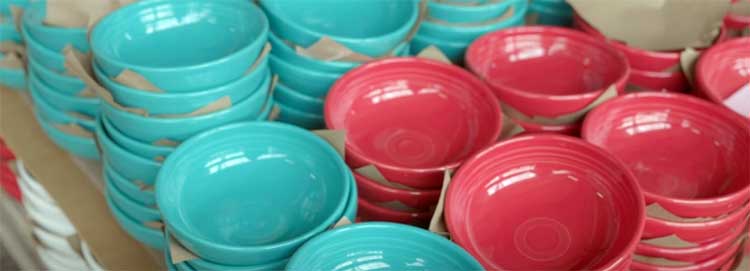
Fiesta is the life of the party with its rainbow of colors and 150-year legacy. It’s sturdy, made in the USA, and has a cult following for good reason. I love Fiesta’s vibrant hues, but Cambria’s subtler, handcrafted aesthetic feels more refined for my taste.
Fiesta’s plates are slightly lighter, which is great if weight’s an issue, but they can chip if you’re not careful. Cambria’s glaze feels more resistant to daily wear, and its open stock options are just as flexible as Fiesta’s. If you want bold and playful, Fiesta’s your pick; for understated elegance, Cambria wins.
- Heath Ceramics
Heath Ceramics Rim Line is the artisanal darling, handcrafted in small batches with a rustic, unglazed rim. It’s gorgeous—each piece feels like a work of art—but it’s pricey (think $130 for a three-piece setting).
Cambria offers a similar handcrafted vibe at a fraction of the cost. Heath’s rims can stain over time, which adds character but might bug you if you’re OCD about pristine dishes. Cambria’s glazed finish is easier to maintain, and it’s more forgiving for everyday use. Heath is for those who want heirloom-quality; Cambria is for practical beauty.
- Corelle Dinnerware
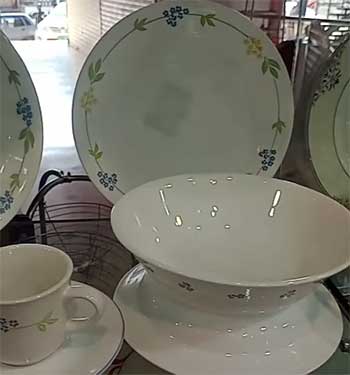
Corelle is the budget-friendly champ, known for its lightweight, near-indestructible glass.
It’s perfect if you’re clumsy or have kids, and you can snag a set for under $60.
But let’s be honest: Corelle lacks the soulful heft of Cambria.
It’s functional, not fancy, and the designs can feel a bit dated.
Cambria’s stoneware feels substantial and elevates your table, while Corelle is more about getting the job done. If durability on a dime is your priority, Corelle’s great; if you want a touch of class, Cambria’s the way to go.
Then there’s West Elm’s Textured Stoneware, which mixes patterns for a trendy, eclectic look. It’s stylish but heavier than Cambria, and some users report chipping. Cambria’s consistent design and durability give it an edge for long-term use.
Ultimately, Cambria strikes a balance: it’s not as pricey as Heath, not as basic as Corelle, and not as loud as Fiesta. It’s the Goldilocks of dinnerware—just right for most of us.
Frequently Asked Questions (FAQ)
Absolutely, and Cambria is a prime example. It’s handcrafted from stoneware with a durable glaze that resists chips and cracks better than many competitors. I’ve used it daily for over a year, and it still looks fantastic despite my less-than-gentle handling. It’s dishwasher- and microwave-safe, which adds to its practicality. While some Pottery Barn lines (like Emma) have mixed reviews for chipping, Cambria consistently gets high marks for quality and longevity.
Pottery Barn doesn’t explicitly state the origin of Cambria dishes on their site, but based on my research and industry trends, they’re likely made in China, where many high-quality stoneware sets are produced. The handcrafted patina and glaze suggest skilled craftsmanship, regardless of location. If “Made in the USA” is a dealbreaker, you might lean toward Fiesta or Heath Ceramics, but Cambria’s quality holds its own.
Cambria’s glaze is tough, but not scratch-proof. I’ve noticed faint marks on my plates after heavy use with stainless steel flatware, though they’re barely visible in the Stone color. Lighter shades might show scratches more. Using gentler utensils or being careful when stacking can minimize this. Compared to sets like Heath’s unglazed rims, Cambria’s glaze is less prone to noticeable wear.
Corelle takes the crown for toughest, thanks to its tempered glass that’s nearly unbreakable (though it shatters dramatically if it does break). Cambria is a close second for stoneware—it’s sturdy, chip-resistant, and handles daily use well. Fiesta and Heath are also durable but can chip under rough handling. If you need something kid-proof, Corelle’s your best bet; for a balance of toughness and style, Cambria’s a winner.
Wrapping It Up: Why Cambria’s Worth It?
After a year of living with Pottery Barn’s Cambria Dinnerware, I’m hooked. It’s the perfect blend of style, durability, and practicality, making every meal feel special without demanding high maintenance.
Whether you’re hosting a crowd or just enjoying a quiet dinner, Cambria elevates the experience. It’s an investment, sure, but one that pays off in longevity and versatility. So, go ahead—grab a set, pick your favorite color, and make your table the envy of every guest.
You won’t regret it.
